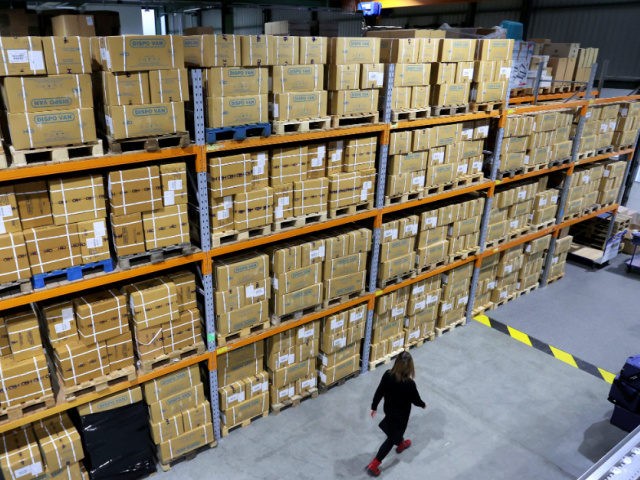Wholesale inventories increased by more than expected in February, a warning sign that efforts to contain inflation may not yet be working.
The Census Bureau on Wednesday said the dollar value of inventories held by wholesalers rose by 2.5 percent, more than the expected 1.5 percent. The January inventory build was revised to 1.2 percent from an initially reported figure of 0.8 percent.
Wholesale inventories increased sharply back in December and were stronger than expected in November as merchants stockpiled items fearing inflation and shortages, and anticipating more robust December holiday shopping than actually occurred. In fact, the strength of retail sales in October was a kind of head-fake. Many businesses saw it as a sign of consumer strength when it was really shopping activity pulled forward due to inflation and worries about shortages.
Economists had expected many businesses to go into liquidation mode to rid themselves of unwanted inventories in the first quarter of this year. Indeed, declining or decelerating inventories were widely expected to be a drag on GDP as well as a moderating factor on inflation. Instead, inventories have been building faster than expected, which will likely force GDP expectations and inflation to rise.
Wholesalers act as middlemen between producers of goods and retailers. The business requires speculation about future demand. A rising wholesale inventory generally indicates expectations for robust demand from consumers for goods. It can go awry, however, if consumer spending is weaker than expected and wholesalers are left with unwanted stockpiles of goods. For this reason, economists watch the inventory to sales ratio, which remains at a historically low level that indicates wholesalers have not built up big piles of goods in compared to consumer activity.
Note, however, that the wholesale inventory figure is nominal. That means that increases in the price level of goods held by wholesalers will push up the figure for reported wholesale inventories even if the number of goods remained steady.
In February, the Producer Price Index for final demand goods rose 2.4 percent, suggesting that a large part of the price increase recorded in Friday’s inventory figure could stem from the rising price level. On the other hand, much of that increase was related to the price of gasoline and inventories in some categories of goods rose much faster than a pure inflationary climb would indicate.
Inventories of groceries rose a seasonally adjusted 2.5 percent, compared with a 2.4 percent rise in PPI for food, suggesting that might be just rising prices. Apparel inventories, however, rose a seasonally adjusted 10 percent in February while the price change for women’s apparel was zero and men’s fell 0.7 percent, an indication of a real build.
Automobile inventories rose 1.4 percent after falling in January, perhaps a hopeful sign of relief for the shortage of new cars that has driven used car prices through the roof. Passenger car prices rose 0.6 percent and light truck prices rose 0.7 percent, according to the February PPI report. That suggests that real inventories of cars were higher.
Inventories of furniture were up 3.6 percent. Lumber inventories up four percent. Hardware inventories up 3.1 percent. Professional equipment inventories up two percent.
Overall, durable goods inventories rose 1.9 percent and nondurable goods were up 3.3 percent.
One possible explanation for the bigger than expected rise in February wholesale inventories is that businesses were scrambling to stockpile goods ahead of expected price hikes in the future. Costco reportedly purchased a lot of paper towels ahead of an expected price hike so that it could pass on the lower prices to its customers.
P&G was going to raise its price on Bounty paper towels 6%, so Jim Senegal and Costco bought hundreds of truckloads before the price hike, thus saving his customers pennies per roll. Sinegal: "If that stuff doesn't really turn you on, then you're in the wrong business." https://t.co/0NLAq1GTzU
— Alex Morris (TSOH Investment Research) (@TSOH_Investing) April 8, 2022
The big picture here is that the report suggests wholesalers remained confident in February that consumers would still have buying power and a willingness to spend on goods in the months ahead. That would indicate that inflationary pressures have not yet abated.

COMMENTS
Please let us know if you're having issues with commenting.